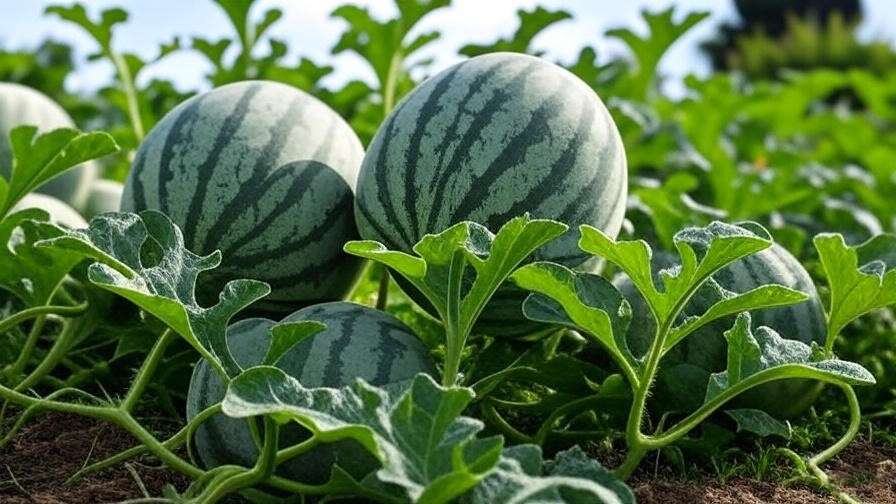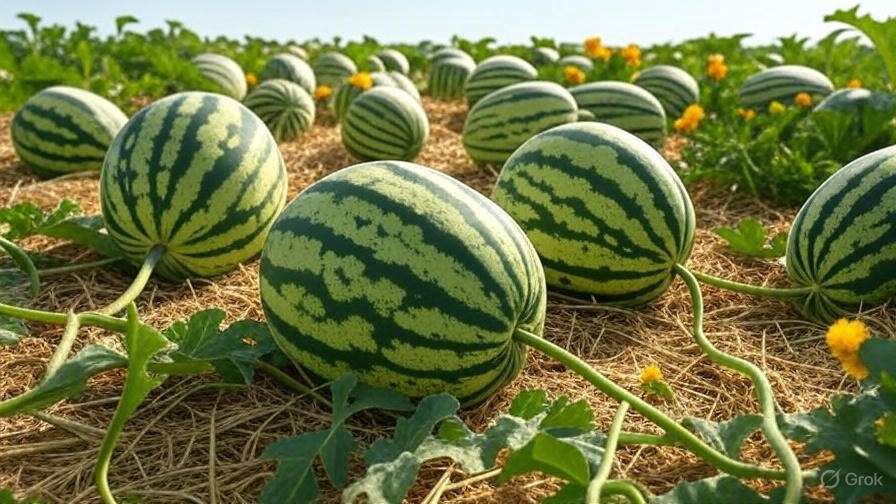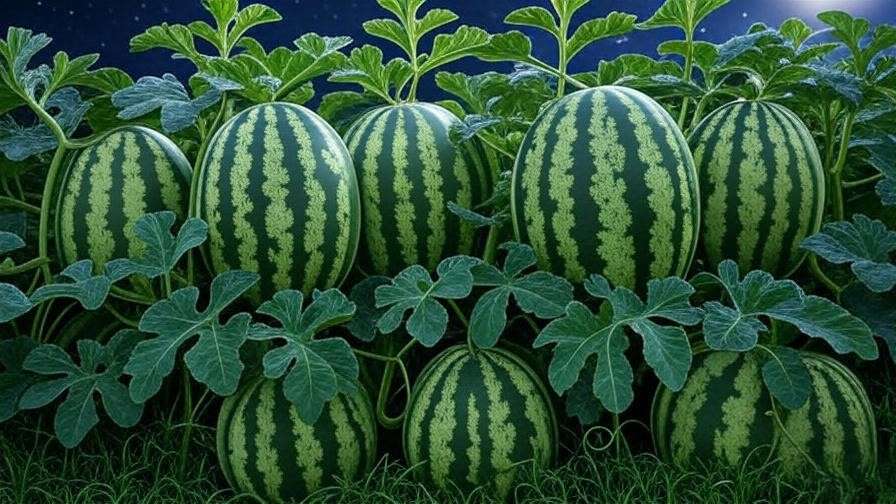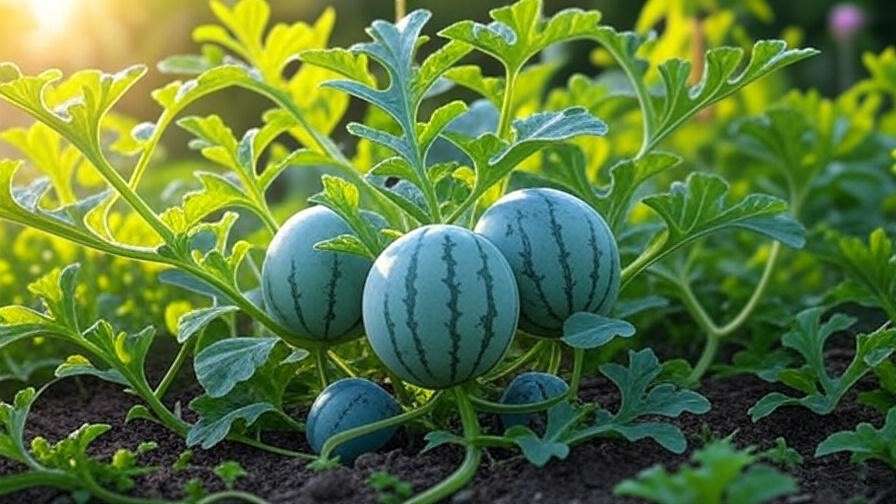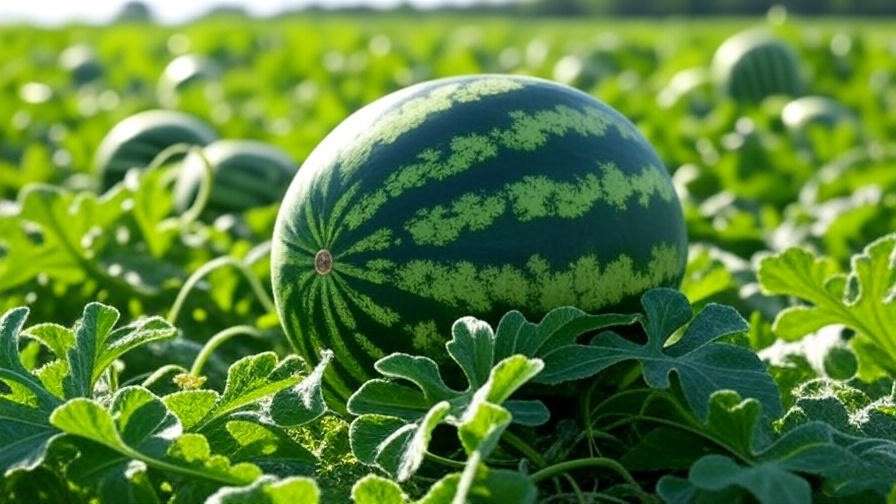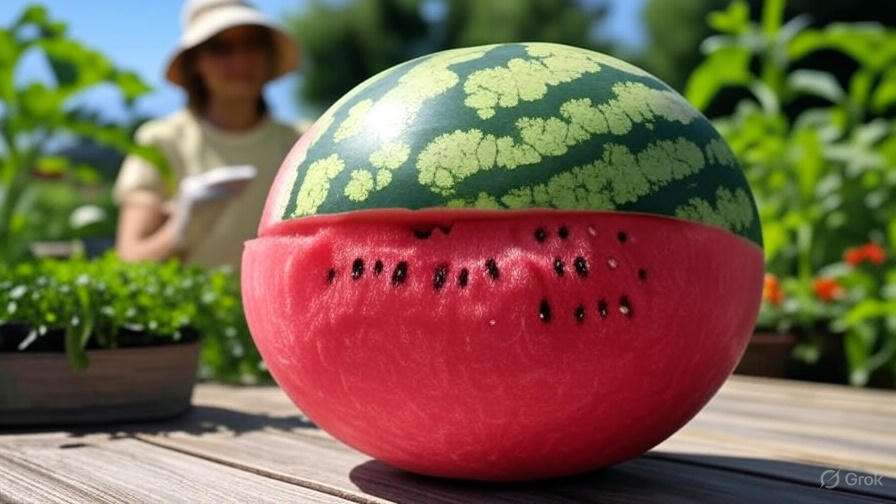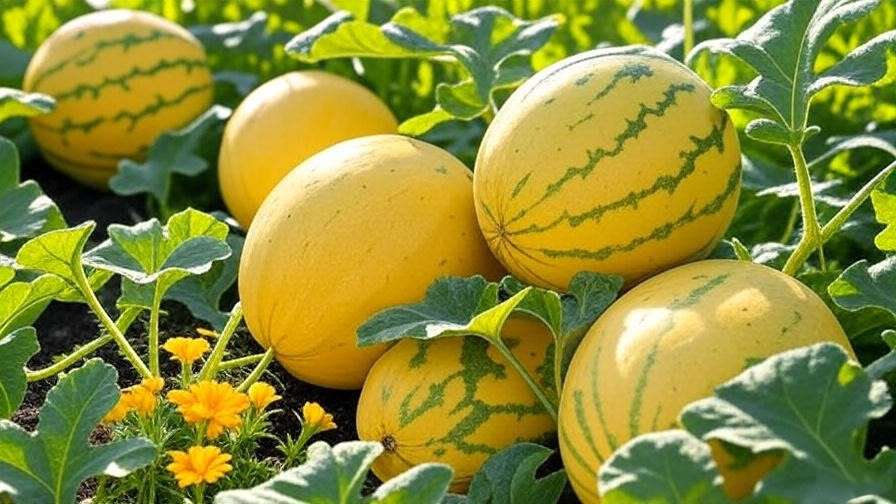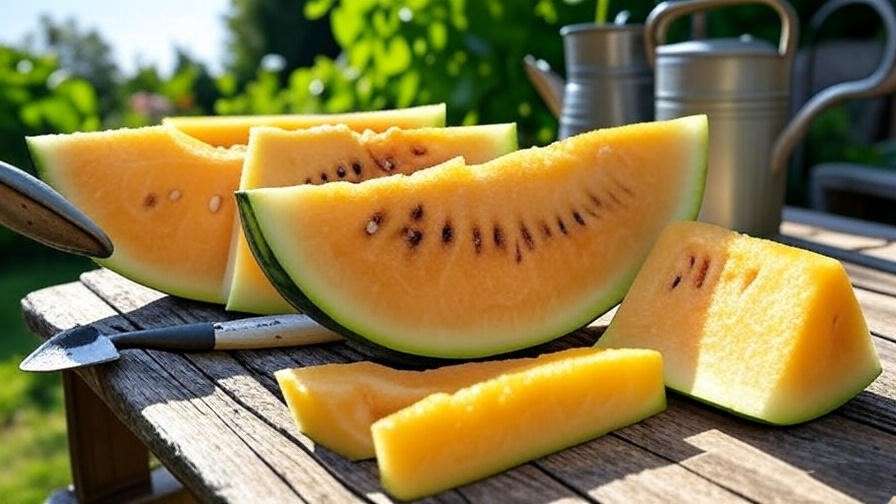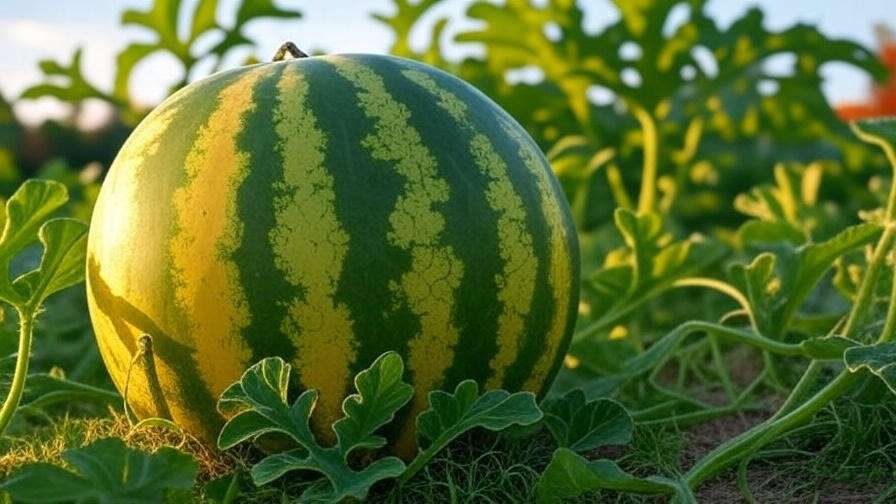Picture this: a vibrant garden bursting with unique, grey-green striped fruits that turn heads and tantalize taste buds. That’s the magic of the grey watermelon! Whether you’re a seasoned gardener or a curious beginner, growing grey watermelons can elevate your garden’s aesthetic and reward you with sweet, juicy harvests. This rare variety, known for its striking appearance and resilience, is gaining popularity among plant enthusiasts. In this comprehensive guide, you’ll uncover expert-backed strategies to grow and care for grey watermelons, ensuring thriving plants and bountiful yields. Written by a horticulturist with over a decade of experience in exotic fruit cultivation, this article delivers actionable advice to help you succeed. Let’s dive into the world of grey watermelons and transform your garden! 🌿
What Is a Grey Watermelon? 🧐
Origins and Characteristics
The grey watermelon, a lesser-known gem in the Cucurbitaceae family, boasts a distinctive grey-green rind with subtle stripes, setting it apart from traditional red-fleshed varieties. Originating from selective breeding in arid regions, this watermelon thrives in warm climates and is prized for its compact size (typically 5–10 pounds) and crisp, sweet flesh. Its flavor profile blends subtle honey-like notes with classic watermelon juiciness, making it a favorite for both fresh eating and ornamental displays. Ideal for USDA zones 4–11, grey watermelons adapt well to diverse environments, provided they receive ample sunlight and well-draining soil.
Nutritional Benefits and Uses
Grey watermelons aren’t just beautiful—they’re packed with nutrients! Rich in vitamins A and C, antioxidants like lycopene, and hydrating electrolytes, they support immunity and overall health. Their juicy flesh is perfect for salads, smoothies, or even grilling for a caramelized twist. For a refreshing summer dish, try this Grey Watermelon Feta Salad: Toss cubed grey watermelon with feta cheese, mint leaves, and a drizzle of balsamic glaze for a crowd-pleasing treat. Beyond culinary uses, their unique rind makes them a stunning centerpiece for garden parties or farm-to-table displays.
Why Grow Grey Watermelons? 🌟
Aesthetic Appeal for Gardens
Grey watermelons are a showstopper in any garden. Their silvery-green stripes add a modern, artistic flair to traditional vegetable patches. Plant them alongside vibrant flowers like marigolds or zinnias to create a visually striking contrast. For small spaces, consider vertical gardening—train the vines on a trellis to save ground space while showcasing their fruit as a living sculpture. Their compact size makes them ideal for urban gardens or patio containers, blending functionality with beauty.
Resilience and Adaptability
Unlike some finicky fruits, grey watermelons are remarkably resilient. They tolerate heat and moderate drought, making them a smart choice for gardeners in warmer climates. Their thick rind offers natural protection against minor pest damage, and they’re less prone to common watermelon diseases like anthracnose. Whether you’re a novice or a master gardener, grey watermelons are forgiving, provided you follow basic care guidelines outlined in this guide.
Environmental Benefits
Growing grey watermelons aligns with sustainable gardening practices. Their lower water needs compared to traditional watermelons make them eco-friendly, especially in water-scarce regions. By incorporating them into your garden, you’re supporting biodiversity and reducing reliance on resource-intensive crops. Pair them with companion plants like beans or corn to enhance soil health and create a thriving ecosystem.
Step-by-Step Guide to Growing Grey Watermelons 🌱
Choosing the Right Location
Grey watermelons crave sunlight—aim for 6–8 hours of direct sun daily to fuel their growth. Choose a spot with well-draining, loamy soil and a pH between 6.0 and 7.0. Test your soil using a home kit or send a sample to a local extension service for precise results. If your soil is heavy clay or too sandy, amend it with organic compost or aged manure to improve texture and fertility. Avoid low-lying areas prone to waterlogging, as excess moisture can harm roots.
Expert Tip: Add a 2-inch layer of organic mulch (like straw or wood chips) around the planting area to retain moisture and regulate soil temperature.
Planting Grey Watermelon Seeds
Timing is critical for grey watermelon success. Plant seeds in spring or early summer when soil temperatures reach at least 70°F (21°C). Sow seeds 1 inch deep, spacing them 3–4 feet apart in rows or hills to allow ample room for sprawling vines. For small gardens, consider trellising to save space—use sturdy supports like metal cages or A-frame trellises. Soak seeds in lukewarm water for 12 hours before planting to boost germination rates.
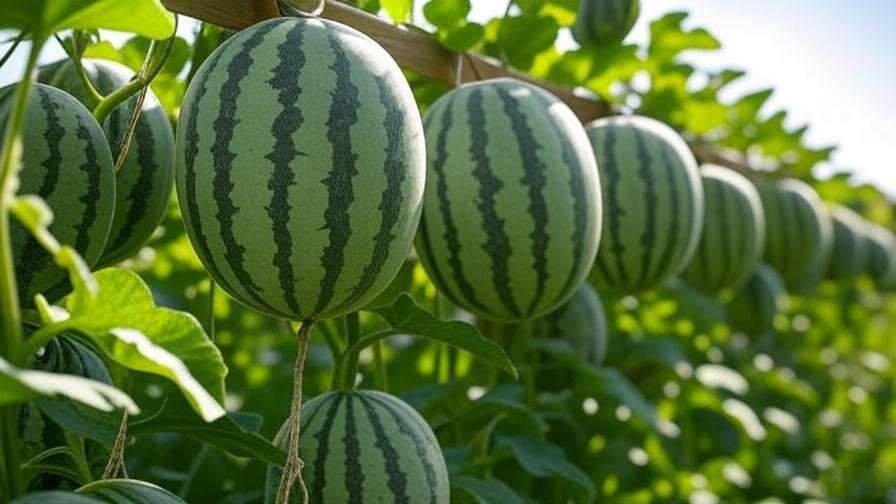
Example: For a 10×10-foot garden, plant 4–6 grey watermelon seeds in two rows, spacing hills 5 feet apart for optimal airflow and fruit development.
Watering and Irrigation Needs 💧
Grey watermelons need consistent but not excessive watering. Aim for 1–2 inches of water per week, delivered through deep, infrequent sessions to encourage strong root systems. Drip irrigation is ideal for precision, reducing water waste and keeping foliage dry to prevent fungal issues. Monitor soil moisture with a simple finger test—water when the top inch feels dry. Overwatering can lead to root rot, so ensure proper drainage.
Common Mistake: Avoid watering in the evening, as wet foliage overnight invites powdery mildew.
Fertilizing for Success
Feed grey watermelons with a balanced fertilizer (10-10-10 NPK) at key growth stages: planting, flowering, and fruiting. At planting, mix in 1–2 cups of organic compost per hill. During flowering, apply a phosphorus-heavy fertilizer to promote fruit set. Once fruits appear, switch to a potassium-rich blend to enhance size and sweetness. For organic gardeners, compost tea (made by steeping compost in water for 24–48 hours) is a nutrient-packed alternative that boosts soil microbes.
Expert Insight: Apply fertilizers early in the morning to maximize nutrient absorption and minimize leaf burn.
Caring for Grey Watermelon Plants 🌿
Pruning and Training Vines
Pruning grey watermelon vines improves airflow and directs energy to fruit production. Once vines reach 3–4 feet, trim secondary runners to focus growth on 2–3 main vines per plant. If trellising, gently tie vines to supports using soft twine, checking weekly to prevent constriction. Remove any yellowing or damaged leaves to reduce pest habitats.

Visual Aid Idea: Include a diagram showing how to identify and prune secondary runners for beginners.
Pest and Disease Management 🐞
Grey watermelons face threats from pests like aphids, cucumber beetles, and spider mites. Inspect plants weekly, focusing on leaf undersides. For organic control, spray neem oil (diluted per label instructions) or introduce ladybugs as natural predators. Companion planting with marigolds or nasturtiums can deter pests naturally. Common diseases include powdery mildew (white patches on leaves) and fusarium wilt (wilting despite adequate water). Prevent mildew with proper spacing and morning watering; for wilt, rotate crops annually and use disease-resistant varieties.
Pro Tip: Dusting leaves with food-grade diatomaceous earth can deter crawling pests without chemicals.
Pollination Tips for Better Yields 🐝
Grey watermelons rely on pollinators like bees for fruit set. Attract them by planting pollinator-friendly flowers like lavender or borage nearby. If pollination is slow (e.g., few fruits despite flowers), try hand-pollination: Use a small brush to transfer pollen from male flowers (thin stems) to female flowers (with tiny fruit at the base). Perform this in the morning when flowers are open.
FAQ Answer: If your grey watermelon isn’t fruiting, check for pollinator activity and consider hand-pollination to boost yields.
Harvesting and Storing Grey Watermelons 🍉
When to Harvest
Knowing the perfect time to harvest your grey watermelon ensures maximum flavor and texture. Typically, grey watermelons are ready 70–90 days after planting, depending on the variety and climate. Look for these telltale signs of ripeness:
- Yellowing belly: The spot where the melon rests on the ground turns creamy yellow.
- Dull rind: The grey-green rind loses its glossy sheen, appearing matte.
- Hollow sound: Gently tap the melon; a ripe one produces a deep, hollow thud.
Harvest too early, and the flesh may lack sweetness; too late, and it can become mushy. Check vines daily once fruits near maturity to catch the perfect window.
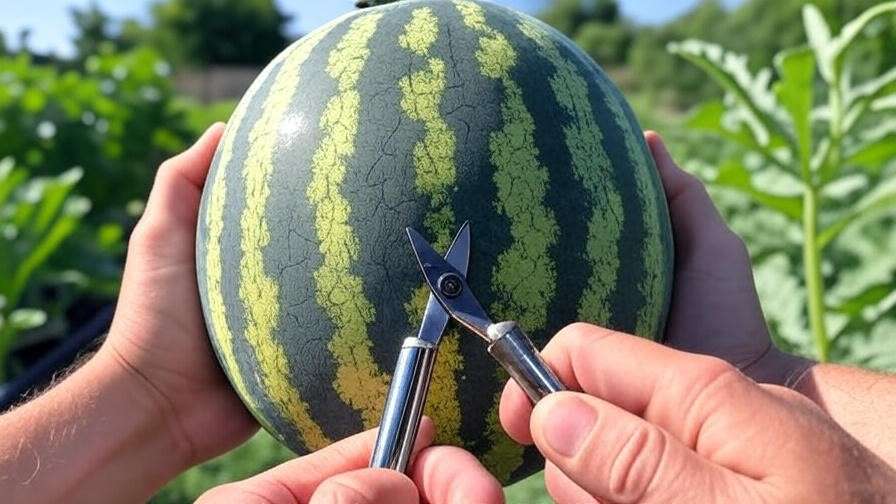
Expert Tip: If you’re unsure, cut one melon as a test. A ripe grey watermelon will have firm, juicy flesh with vibrant color (usually pale pink to deep red, depending on the cultivar).
Proper Harvesting Techniques
To harvest, use clean, sharp garden shears or a knife to cut the stem about 2 inches above the fruit. Avoid twisting or pulling, as this can damage the vine or fruit, reducing shelf life. Handle melons gently to prevent bruising, which can lead to spoilage. After cutting, clean tools with rubbing alcohol to prevent disease spread to other plants.
Pro Tip: Harvest in the morning when temperatures are cooler to preserve the melon’s freshness and sugar content.
Storage and Preservation
Grey watermelons store well under the right conditions. Keep whole melons in a cool, dry place (50–60°F) with good ventilation, where they can last up to 3 weeks. Avoid stacking to prevent pressure marks. For cut melons, wrap tightly in plastic wrap and refrigerate for up to 5 days. To extend enjoyment, try these preservation methods:
- Freezing: Cube the flesh, spread on a tray to freeze individually, then transfer to airtight bags for up to 6 months. Use in smoothies or sorbets.
- Juicing: Blend the flesh, strain, and store in glass jars in the fridge for 2–3 days.
Recipe Idea: For a refreshing Grey Watermelon Sorbet, blend 4 cups of cubed grey watermelon with ½ cup sugar and a splash of lemon juice. Freeze in an ice cream maker for a light, summery dessert.
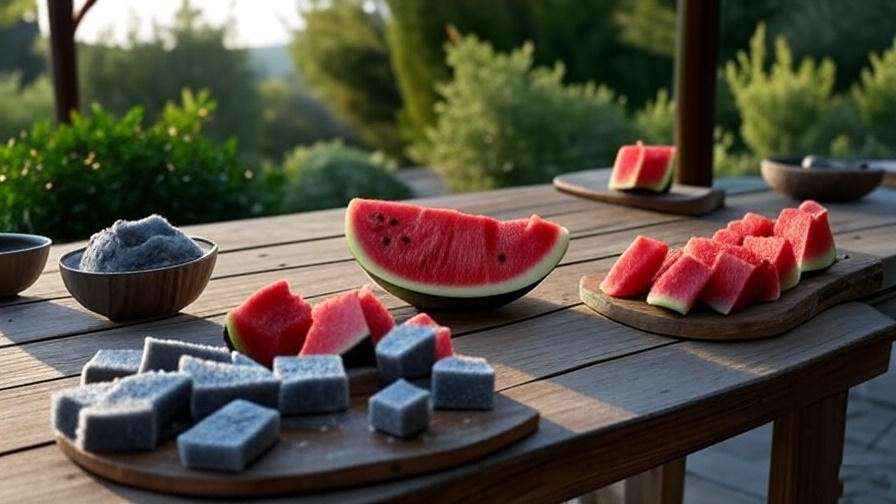
Troubleshooting Common Grey Watermelon Problems 🔧
Yellowing Leaves
Yellow leaves can signal several issues, but don’t panic—most are fixable with prompt action. Common causes include:
- Nutrient deficiency: Low nitrogen or magnesium can cause yellowing. Apply a balanced fertilizer or epsom salt (1 tbsp per gallon of water) as a foliar spray.
- Overwatering: Soggy soil suffocates roots. Reduce watering and ensure proper drainage.
- Pests: Aphids or spider mites may sap plant energy. Inspect and treat with neem oil.
Test your soil to confirm nutrient levels, and adjust care based on findings. Recovery typically takes 1–2 weeks with consistent corrections.
Small or No Fruit Production
If your grey watermelon vines are lush but fruitless, consider these culprits:
- Poor pollination: Lack of bees or ineffective pollination can reduce yields. Hand-pollinate as described earlier.
- Inadequate sunlight: Less than 6 hours of direct sun stunts fruit development. Relocate containers or prune nearby plants blocking light.
- Nutrient imbalance: Excess nitrogen promotes leafy growth over fruit. Switch to a low-nitrogen, high-potassium fertilizer during flowering.
Monitor progress after adjustments; you may see fruit set within 10–14 days.
Cracked or Misshapen Fruit
Cracked or oddly shaped grey watermelons often result from inconsistent care. Rapid growth spurts, caused by heavy rain or irregular watering, can split the rind. To prevent this:
- Maintain a steady watering schedule (1–2 inches per week).
- Use mulch to regulate soil moisture.
- Avoid over-fertilizing during fruiting, as excess nitrogen can cause uneven growth.
Misshapen fruits are still edible but may not store as well. Harvest cracked melons immediately to avoid pest attraction.
Expert Tips for Maximizing Grey Watermelon Growth 🚀
To take your grey watermelon game to the next level, try these advanced strategies:
- Companion Planting: Grow grey watermelons alongside corn or beans to enhance soil nitrogen and deter pests. Nasturtiums act as a trap crop for aphids, protecting your melons.
- Mulching Benefits: A 2–3 inch layer of organic mulch (straw, grass clippings, or bark) retains moisture, suppresses weeds, and keeps roots cool in hot climates.
- Seasonal Adjustments: In humid regions, increase vine spacing to 5 feet to reduce fungal risks. In arid areas, water deeply twice weekly and shade young plants during extreme heat.
Case Study: Urban gardener Sarah from Austin, Texas, grew 12 grey watermelons in a 100-square-foot plot using trellises and drip irrigation. By pruning secondary vines and hand-pollinating, she achieved a 90% fruit set rate, proving small spaces can yield big results with the right techniques.

Frequently Asked Questions (FAQs) ❓
- How long does it take for grey watermelons to grow?
Most varieties mature in 70–90 days from planting, depending on climate and care. - Can grey watermelons be grown in containers?
Yes! Use a 15–20-gallon pot with drainage holes, trellis the vines, and ensure full sun exposure. - What’s the difference between grey watermelons and other varieties?
Grey watermelons have a unique grey-green rind, compact size, and slightly sweeter flavor compared to traditional varieties like Crimson Sweet. - How do I know if my grey watermelon is ripe?
Look for a yellow belly, dull rind, and hollow sound when tapped. - Are grey watermelons suitable for beginner gardeners?
Absolutely! Their resilience and moderate care needs make them beginner-friendly, provided you follow this guide’s tips.
Conclusion
Growing grey watermelons is a rewarding journey that combines beauty, flavor, and sustainability in your garden. From selecting the perfect sunny spot to mastering pollination and harvesting, this guide equips you with everything needed to cultivate thriving plants. Whether you’re dreaming of juicy slices on a summer day or a stunning garden centerpiece, grey watermelons deliver. Start your gardening adventure today—plant those seeds, nurture your vines, and share your progress with our community! 🌱 Want more? Download our free Grey Watermelon Care Checklist or join our gardening forum for expert tips and inspiration.

